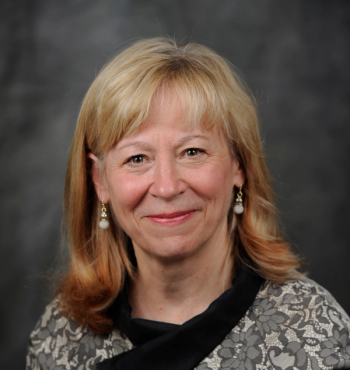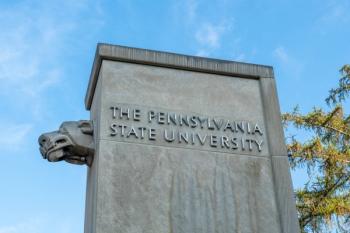Key Points
- The Gambia has launched a new mid-infrared (MIR) soil spectroscopy lab at its National Agricultural Research Institute (NARI) to support more accurate and efficient soil diagnostics, aiming to improve crop yields, inform policy decisions, and guide land restoration efforts.
- This lab is part of the broader African Imaging Spectral Network (AFSIN), a continent-wide initiative connecting over 30 MIR labs and promoting sustainable development through spectral science, cloud-based data systems, and real-time agricultural insights.
- The long-term goal is to empower Gambian farmers and institutions with locally managed, data-driven agricultural practices, reducing reliance on external consultants and enhancing national food security and economic sustainability.
Africa is the second-largest continent on Earth. Comprised of 54 nations, it is known for its naturally beautiful landscapes and diverse cultures. However, many countries that make up Africa have struggled with stabilizing their local economies to improve the quality of life for their citizens.
One of the main challenges is that many developing African countries rely on the agricultural industry to stimulate its economy. If this industry suffers, then the entire country does.
The Gambia is one of these countries. With a population of 2.4 million and a human development index of 0.524, the Gambia’s history has been marked with political instability and economic hardships (1,2). Although the Gambia receives a little revenue from tourism, its primary economic driver is agriculture.
As a result, the Gambia’s efforts are on improving crop production, policy, and land restoration, and these three goals start with improving soil diagnostics. This article highlights how the country is investing in soil spectroscopy technology to accelerate evidence‑based decision‑making across crop production, policy, and land restoration.
The Gambia’s National Agriculture Research Institute
In a recent announcement, the country broadcasted the establishment of a mid-infrared (MIR) soil spectroscopy laboratory at the Gambia’s National Agricultural Research Institute (NARI) in Banjul (3). As part of the Regional Soil Fertility Mapping Project (RSFMP), this compact benchtop spectrometer enables rapid, cost‑effective soil diagnostics: soil samples are air‑dried, finely ground, then exposed to MIR light for just ~30 seconds (3). The resulting spectral signatures are matched against CIFOR‑ICRAF’s vast spectral library (over 200,000 reference spectra) to decode critical soil properties within minutes (3).
As part of the establishment of this laboratory, the research team is utilizing new technology to improve soil spectroscopy. One of the technologies being used is a new cloud-based laboratory information management system (LIMS) to automate and streamline laboratory workflows (3). LIMS has allowed the researchers to improve laboratory operations by managing sample registration, scheduling, analysis, results and archiving, ensuring that spectral data and metadata are securely stored and easily retrievable, and supporting new automated, actionable laboratory reports for research, extension, and policymaking (3).
How does The Gambian laboratory fit into the broader African Spectral Network?
The African Imaging Spectral Network (AFSIN) is a collaboration between several research laboratories and groups throughout Africa (4). This initiative is designed to build up the research capacity of these laboratories and promote sustainable development through training and research (4). Much of the focus of this network is on applying spectral imaging and optical spectroscopy to combat some of Africa’s most pressing issues, including environmental monitoring, agriculture, and medicine (4). Some of the partner institutions in AFSIN include the University of Cape Coast in Ghana, the Institut National Polytechnique Felix Houphouet-Boigny in the Ivory Coast, the University of Nairobi in Kenya, the University of Bamako in Mali, and the University of Ouagadougou in Burkina Faso (4).
The AFSIN was initially created in 2008 in Ghana (4). It focused on improving malaria diagnosis by implementing multimodal and multispectral microscopy. This new Gambian laboratory is part of a broader network of over 30 MIR laboratories across Africa anchored by CIFOR‑ICRAF’s Soil‑Plant Spectral Diagnostics Lab in Nairobi (3).
What are some of the long-term goals of NARI?
The Gambian’s NARI is collecting data through the Land Degradation Surveillance Framework survey conducted under RSFMP. These data will provide insight into the soil and vegetation, trees and shrubs, as well as the land surface (3). One of the main goals is to use this data to help policymakers make better-informed decisions. By improving targeted land management and fertilizer application, the Gambia hopes to improve its agricultural yields (3).
These data will also benefit Gambian farmers. By having access to the MIR spectral data, farmers will have the ability to optimize crop rotation, nutrient management, and crop selection (3). Ultimately, this will help Gambian institutions lead soil health efforts independently over time and limit their dependence on external consultants (3). In turn, this will help the Gambia build a more sustainable and efficient agricultural economy. lessening reliance on external consultants.
The Gambian MIR laboratory is playing a role into a broader vision of scalable soil diagnostics across Africa. By digitizing soil testing and embedding it within national institutions, the initiative shifts soil management from guesswork to precision, from slow laboratory pipelines to real‑time feedback loops (3). This approach blends spectral science, cloud‑based data systems, and on‑the‑ground training to produce soil intelligence at national scale (3). It exemplifies how science-informed agriculture, when applied locally, can spark broader transformation and lead to economic development in the Gambia and across Africa.
The Gambia is not the only country investing in soil spectroscopy. South Africa is also conducting work in this space (5). Their investigation in this field further enforces that MIR spectroscopy improves upon traditional methods and will continue to be used for soil spectroscopy efforts in the future.
References
- BBC, The Gambia Country Profile. BBC News. Available at: https://www.bbc.com/news/world-africa-13376517 (accessed 2025-08-04).
- United Nations Development Programme, Human Development Report 2025. UNDP.org. Available at: https://hdr.undp.org/system/files/documents/global-report-document/hdr2025reporten.pdf (accessed 2025-08-04).
- Cordon, S. Digging Deeper: How Soil Spectroscopy is Revolutionizing Agriculture in The Gambia. CIFOR.org. Available at: https://forestsnews.cifor.org/92859/soil-spectroscopy-in-the-gambia?fnl= (accessed 2025-07-30).
- African Spectral Imaging Network, Homepage. AFSIN. Available at: https://afsinnet.net/#:~:text=Welcome%20to%20the%20official%20website,for%20Sustainable%20Development%20in%20Africa%E2%80%9D (accessed 2025-08-04).
- Kock, A.-L.; Ramphisa-Nghondzweni, P. D.; Van Zijl, G. Development of Soil Spectroscopy Models for the Western Highveld Region, South Africa: Why Do We Need Local Data? Eur. J. Soil Sci. 2024, 75 (6), e70014. DOI: 10.1111/ejss.70014






